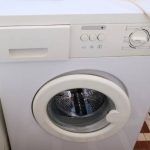Maintaining a clean toilet is essential for both hygiene and comfort, but knowing how to properly clean your toilet seat is crucial to avoid ruining it. This article will delve into the best practices and products to use for keeping your toilet seat spotless without causing any damage. From choosing the right cleaning products to step-by-step maintenance, we’ve got you covered for ensuring your bathroom remains a clean and safe space.
Selection of Cleaning Agents
When considering how to clean toilet seats, the selection of cleaning agents is pivotal. You have the choice between natural cleaners and chemical cleaners. Natural solutions, such as vinegar or baking soda, are often gentler on surfaces and also environmentally friendly. If you opt for chemical cleaners, look for those labeled as safe for use on toilet seats to prevent any unwanted chemical reactions that could cause damage.
For a safe and effective clean, you should use a gentle, non-abrasive cleaning agent. Baking soda, for example, not only deodorizes but also gently scrubs without scratching the surface. A diluted hydrogen peroxide solution could help in disinfecting the seat without the harshness of bleach. Harsh bowl cleaners might not be suitable as they could cause discoloration or even cracks in the seat.
On the flip side, certain products should not find their way onto your toilet seat. Abrasive powders and pads could create scratches where bacteria can grow, while bleach can weaken plastic seats and silicone seals over time. Oils or conditioners, while seemingly beneficial, may also leave a residue that could cause slipping hazards.
- Vinegar – a gentle disinfectant
- Baking soda – for non-abrasive scrubbing
- Diluted hydrogen peroxide – for disinfecting without bleaching
- Mild dish soap – removes grime without harsh chemicals
- Rubbing alcohol – for sanitizing

Preparation for Cleaning
Prior to embarking on the cleaning process, it’s essential to gather the necessary supplies. You will need your selected cleaning product, gloves, a soft cloth or sponge, and a toilet brush. Ensuring you have everything on hand before you begin will not only streamline your cleaning routine but will also prevent the spreading of germs across different bathroom surfaces.
The pre-cleaning steps involve donning your gloves and removing any items on or around the toilet seat to provide unobstructed access. It also helps to give the toilet bowl a preliminary flush to remove any debris that could also become a nuisance while cleaning the seat. If your toilet brush has been used recently, make sure it’s clean before it makes contact with the toilet seat.
Step-by-Step Cleaning Process
Your daily cleaning routine doesn’t have to be an arduous task. A Quick Clean Method can help you maintain cleanliness and reduce the need for deep cleaning sessions. Simply spray your cleaning solution onto the toilet seat and then wipe it down with a cloth or sponge. This should only take about 1 minute, but doing it regularly will keep the seat sanitary.
For a more thorough approach, the Deep Cleaning Method involves disassembling the seat, if possible, for a comprehensive clean. Remove the seat according to the manufacturer’s instructions and use a sponge soaked in your chosen cleaning product. Pay close attention to the hinges and any other hard-to-reach areas where bacteria may lurk. After thoroughly scrubbing, rinse the seat with water and then wipe it dry before reassembling. This process not only ensures deep sanitation but also extends the life of your toilet seat by preventing the buildup of corrosive elements.
When dealing with the toilet bowl itself, refrain from using a scrubbing brush that is too stiff as it could cause scratches. Instead, opt for a toilet brush with nylon bristles that are firm yet flexible. Apply the cleaner around the rim and let it sit for several minutes. Then scrubbing with the brush, ensuring you reach beneath the rim, will also provide a more detailed clean. After scrubbing, it’s important to then flush away the residue.
In the course of the article, we will further discuss maintenance tips that will only enhance the longevity and cleanliness of your toilet seat. Remember, regular upkeep could also save you time and effort in the long run.
Stay tuned as we guide you through the nuances of proper toilet care, highlighting not only best practices but also common mistakes to avoid. With the right approach, your toilet seat can remain impeccable for years to come.

Maintenance Tips
Proactive Regular Maintenance can significantly prolong the cleanliness and preserve the integrity of your toilet seat. This involves wiping down the seat and lid at least once a week with a mild cleaner that does not contain bleach or harsh chemicals. In addition, should ensure that any spills or stains are cleaned up promptly to prevent any long-term damage.
- Use gentle cleaning agents weekly
- Deal with stains immediately to prevent setting
Moreover, it is important to also pay attention to the toilet’s surroundings. Keeping the floor, handle, and tank clean will also prevents the spread of bacteria to the seat area. This comprehensive approach to maintenance will also ensure a consistently clean and hygienic bathroom environment.
Avoiding Common Mistakes is crucial. For example, one should not ignore the cleanliness of the underside of the seat where bacteria can easily proliferate. Even though it might not be visible, a weekly cleaning regimen should include this area. Secondly, toilet brushes should be replaced regularly since an old brush can harbor bacteria and reduce cleaning effectiveness.
- Clean the underside of the seat weekly
- Replace toilet brushes regularly to maintain hygiene
Avoiding over-tightening of the seat bolts is another point of consideration. Bolts that are too tight can lead to cracking of the seat or the toilet bowl with regular use. Lastly, the use of in-tank automatic bleach cleaners should be avoided as they can damage the seat and internals of your toilet over time.

Conclusion
In conclusion, the cleanliness of toilet seats is an integral aspect of bathroom hygiene that requires a balanced approach. By selecting the correct cleaning products and employing a regular cleaning schedule, you can maintain a pristine toilet seat without risking damage to the material. Implementing the tips and methods outlined in this article not only ensures that you create a safe and sanitary bathroom environment but also helps extend the life of your toilet seat. Remember, a clean toilet seat is the result of ongoing maintenance rather than a one-time effort.
FAQs
Q1: How often should I clean my toilet?
A1: The toilet bowl should be cleaned at least once a week, but the toilet seat may require more frequent cleaning depending on usage. Quick wipe-downs daily can help maintain hygiene between more thorough weekly cleanings.
Q2: Can I use bleach to clean my toilet seat?
A2: Bleach can be harmful to toilet seats, particularly if they are made of materials like plastic or wood, which can become discolored or weakened with repeated use of bleach. You should ideally use a non-bleach, non-abrasive cleaner.
Q3: Is it necessary to wear gloves while cleaning the toilet?
A3: It is advisable to wear gloves while cleaning the toilet to protect your skin from any cleaning products and to prevent the spread of bacteria.
Q4: Can using the wrong cleaning products void the warranty on my toilet seat?
A4: Yes, using the wrong cleaning products such as abrasive cleaners or bleach can potentially void the warranty on your toilet seat. It’s best to check the manufacturer’s recommendations for suitable cleaning products.
Q5: What should I do if my toilet seat has a stubborn stain?
A5: For stubborn stains, you can create a paste of baking soda and water, apply it to the stain, and let it sit for 10-15 minutes before wiping away. For tougher stains, products designed specifically for toilet seat stain removal can be used according to their instructions.


